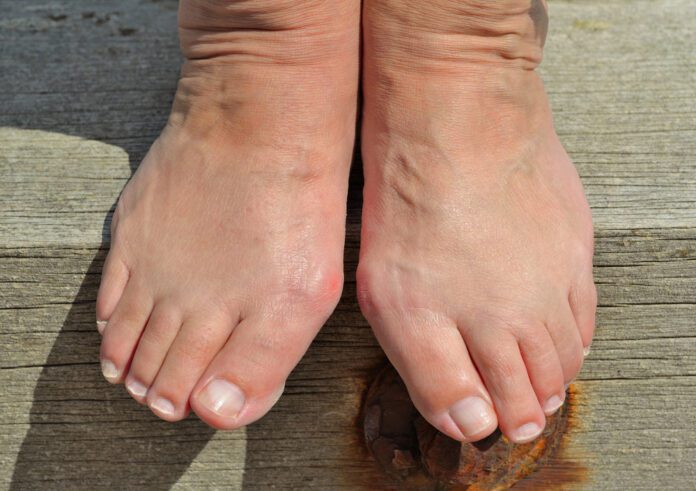Overview
A bunion forms when your big toe points toward the second toe. This causes a bump to appear on the inside edge of your toe.
Cause
Bunions are more common in women than men. The problem can run in families. People born with the abnormal alignment of the bones in their feet are more likely to form a bunion.
Wearing narrow-toed, high-heeled shoes may lead to the development of a bunion.
The condition may become painful as the bump gets worse. Extra bone and a fluid-filled sac can grow at the base of the big toe.
Symptoms
Symptoms may include:
- Red, thickened skin along the inside edge at the base of the big toe.
- A bony bump at the first toe joint, with decreased movement in the toe site.
- Pain over the joint, which pressure from shoes makes worse.
- The big toe turned toward the other toes and may cross over the second toe. As a result, corns and calluses often develop where the first and second toes overlap.
- Difficulty wearing regular shoes.
- You may have problems finding shoes that fit or shoes that do not cause pain.
Exams & Tests
A health care provider can very often diagnose a bunion by looking at it. A foot x-ray can show an abnormal angle between the big toe and the foot. In some cases, arthritis may also be seen.
Treatment
When a bunion first begins to develop, you can do the following to care of your feet.
Wear wide-toed shoes. This can often solve the problem and prevent you from needing more treatment.
Wear felt or foam pads on your foot to protect the bunion, or devices called spacers to separate the first and second toes. These are available at drugstores.
Try cutting a hole in a pair of old, comfortable shoes to wear around the house.
Talk to your provider about whether you need inserts to correct flat feet.
Stretch the calf muscle of your leg to have better alignment of your feet.
If the bunion gets worse and more painful, surgery may help. The surgery bunionectomy realigns the toe and removes the bony bump. There are more than 100 different surgeries to treat this condition.
Source
Courtesy of MedlinePlus from the National Library of Medicine



